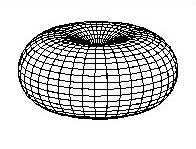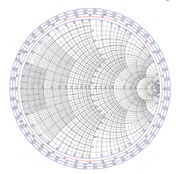Antennas are the technology that underpin today’s digital culture as they enable wireless connectivity in millions of consumer and industrial electronic devices. The emergence of the internet of things (IoT) and machine-to-machine interfaces means that antennas can be found almost everywhere. This includes connected vehicles, smart thermostats that control heating and air conditioning in the home and in a huge array of industrial sensors, measuring devices and controls.
Most consumer and many industrial devices feature embedded antennas, rather than terminal, or external, antennas. Embedded antennas are contained within the device or component, where their proximity to other components can cause many unplanned interactions. And their location in a device fundamentally affects the antenna’s performance. Get it wrong, and the device won’t work as planned. Or at all.
Designing in an embedded antenna, rather than adding it once the rest of the architecture and board design has been completed, designs out poor performance, interference and incompatibilities.
In this guide, we explore the must-know concepts that product designers must know when selecting and integrating an embedded antenna into a device design:
Frequencies
Frequency is the concept that enables multiple devices that use antennas to communicate via electromagnetic waves to function simultaneously. Different devices, such as mobile phones or televisions, operate within specific allocated frequencies. So, it is essential that product designers know the frequencies relevant to their application, as this will also determine the choice of embedded antenna used.
Radiation patterns
Radiation pattern describes how the power of the antenna varies according to the direction of the electromagnetic waves it is emitting. A directional antenna emits a signal in a specific direction. A toroid, or doughnut, shaped radiation pattern shown below in figure 1 is strong in the x- and y-axis but has zero strength in the z-axis. Understanding the strength of the radiation pattern is another fundamental factor to consider when choosing an antenna for a device. Antennas with highly ‘directional’ characteristics may be better suited to fixed applications. Furthermore, handheld and wearable devices may perform better with slightly omni directional characteristics.
 Figure 1: A toroid radiation pattern. Source: https://en.wikipedia.org/wiki/Omnidirectional_antenna#/media/File:L-over2-rad-pat-per.jpg - reproduced according to a creative commons license.
Figure 1: A toroid radiation pattern. Source: https://en.wikipedia.org/wiki/Omnidirectional_antenna#/media/File:L-over2-rad-pat-per.jpg - reproduced according to a creative commons license.
Directivity
Directivity, as its name suggests, shows how directional the radiation emitted from or received by the antenna is. A satellite TV dish on the side of a house is highly directional because it is locked onto a specific satellite. In contrast, because the radio signal could come from multiple directions depending on where the user is in relation to the nearest base station, the antenna in a mobile phone has low directivity. Ceramic patch antennas, commonly used for GNSS applications, are also a highly directional antenna type.
Efficiency
Efficiency, or antenna efficiency, measures the ratio of power supplied to an antenna against the power of electromagnetic radiation it emits. It is not an absolute measure of input/output but a ratio measured in decibels (dB). There are many factors that affect antenna efficiency. The antenna construction itself, different types of materials around the antenna and other electric fields all impact on efficiency, as does the circuitry architecture on the PCB. For example, antenna efficiency in consumer devices is highly variable, from 20 to 70%. This is because the devices may be constructed in such a way that the antenna is obstructed. Or it may have unshielded electrical components and materials that impact on electromagnetic waves. To improve the efficiency of an antenna, the design must be well optimised – particularly for devices subject to commercial carrier and regulatory certification.
Gain
Gain describes the antenna’s transmitting power in its peak radiation direction. Again, this is a relative and not absolute number, measured against an isotropic source. An isotropic radiation pattern is the same in all directions. It is a theoretical construct used for comparative purposes like this. Antennas that emit the same pattern in all directions do not exist in the real world.
A high gain antenna is useful when the receiving signal source is known, such as a TV aerial. Wearable devices and mobile phone antennas use signals that may come from any direction, so a low gain, non-directional antenna is more effective.
Impedance
Impedance is a vital embedded antenna design factor: getting it wrong means the device won’t function properly, or at all. In broader electronics, impedance is an obstruction of a current within a circuit when a voltage is applied. Antenna impedance follows the same principle, but it can be optimised through calculations so that it operates through maximum efficiency. Impedance matching is the process of ensuring the circuitry, including the antenna is tuned for optimal efficiency for the desired bands of operation. Designers can use Smith Charts, shown in figure 2, to solve impedance mismatches.
 Figure 2: A Smith chart used to plot antenna impedance against operating frequencies.
Figure 2: A Smith chart used to plot antenna impedance against operating frequencies.
[Source: A guide to marching circuits, transmission lines and antenna tuning, Antenova]
Bandwidth
Bandwidth tells the designer about the antenna’s frequency range. Some applications require broad bandwidths, or a wide range of frequencies over which the antenna can send and receive energy. Wideband antennas can exchange more information across all the frequencies available when transmitting or receiving but require more power. Narrowband antennas operate across a smaller range of frequencies, have less capacity for data transfer and generally require less power.
Conclusion
Designing a wireless device that incorporates an embedded antenna is an interactive process that benefits from understanding the fundamental concepts from the outset. Once designed, over-the-air testing in closed anechoic chambers can ensure the antenna’s performance is optimised. By considering the above must-know concepts, designers optimise the chances that the final product will be a success.




